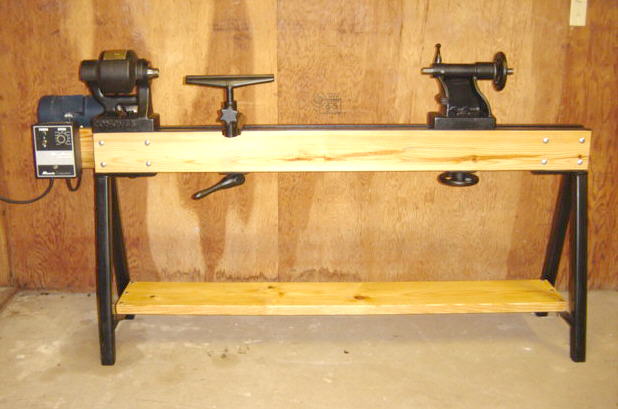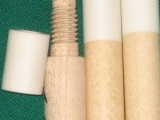I'm sure this has been posted before but I tried to do a search on here but when I searched for "ferrule install" I got a bunch of posts with nothing I was looking for.
I would like to learn how to install my own ferrules. Are there any books or anything like that on this. I just got a wood lathe so I can do basic shaft cleaning and tip installation. I would like to be able to put new ferrules on as well.
Here's the questions I have.
Do you have to tap/die the ferrule to match the tenon? What are the best tools to do this?
Can you replace a tenon if it breaks off? How do you do that?
Is there a good way to sand the sides of the ferrule flat without investing in one of those micro lathes?
The only person I know around here that knows how to do these things owns a pool hall so I don't feel comfortable asking him. He'll probably think I'm trying to take away his customers.
Here's the questions I have.
Do you have to tap/die the ferrule to match the tenon? What are the best tools to do this?
There is no Die that is used to cut a ferrule down to the size of shaft. The only thing that will accomplish this job in a Professional manner is a Lather that will allow the shaft to go through the lathes head stock and a tool post with a cutting tool that has the ability to traverse. Wood Lathes that I have seen will not work for Ferrules.
Can you replace a tenon if it breaks off? How do you do that?
If you break a Tenon off and the shaft is not broken at the shafts shoulder where the Tenon seats to the shaft, the Tenon can easily be replaced without losing any shaft length. In this case the shaft can be drilled out 1 1/4 inch deep 5/16 in diameter and have a wooden dowel inserted and epoxied into place. Once the adhesive is dry the tenon can be threaded and a new ferrule installed.
Is there a good way to sand the sides of the ferrule flat without investing in one of those micro lathes?
First, you do not want the sides of the ferrule flat

, but I know what you trying to say and I have to say no. Understand that you must have the shaft spinning to keep it round while cutting. In addition, the shaft must be running true (Straight) while spinning or as you cut the ferrule material it will not cut evenly.
Below is the procedure for Ferrule Replacement:
1) Ferrule Removal: There are two ways to remove a damaged Ferrule by cutting or by heat. The cutting method should be self explanatory so I will not go into details. The heating method can be accomplished in two ways, Flame or Friction. Using the Flame method you must first using masking tape and tape the junction of the Ferrule and the shaft. Then take a small torch and heat the upper part of the ferrule and the glue will release. The friction method is done in the lathe, by spinning the shaft and applying a leather pad to the ferrule while spinning which will heat the adhesive and allow the ferrule to release. Either method works, and prefer these methods to cutting because in many cases you can reuse the threads on the shaft if it is threaded with little cleaning.
2) Tenon Preparation: The old glue should be removed from the tenon before installing the new ferrule and the wood surface should very slightly roughed up after this cleaning. This should be very minimal if the Heat method was used for ferrule removal.
3) Ferrule Installation: I recommend that the shaft tenon always be threaded for security. Most tenons are threaded 5 1/6-18 you can use a Tap, however, there is also a die that can be purchased for this procedure. There are two types of ferrules used today capped and non-capped, and on a limited basis some ferrules still are not threaded. I personally like to use ferrules that allow the tenon to screw all the way through the ferrule or non-capped. There are couple of tricks that will prevent a glue line where the ferrule meets the wood. Wipe all epoxy off the bottom of the ferrule before seating the ferrule to the shoulder of the shaft, and insure the fit is perfect. The method I prefer is to tint the epoxy, with a White tint, using this method you do not have to wipe off the bottom of the ferrule and you will never have a glue line using any material I have found to date.
If I were you I would either leave this procedure up to a cue repairman or buy a lathe that allows you do what you want to do. This certainly is not Rocket Science, however it does that practice.
Hope this helps


